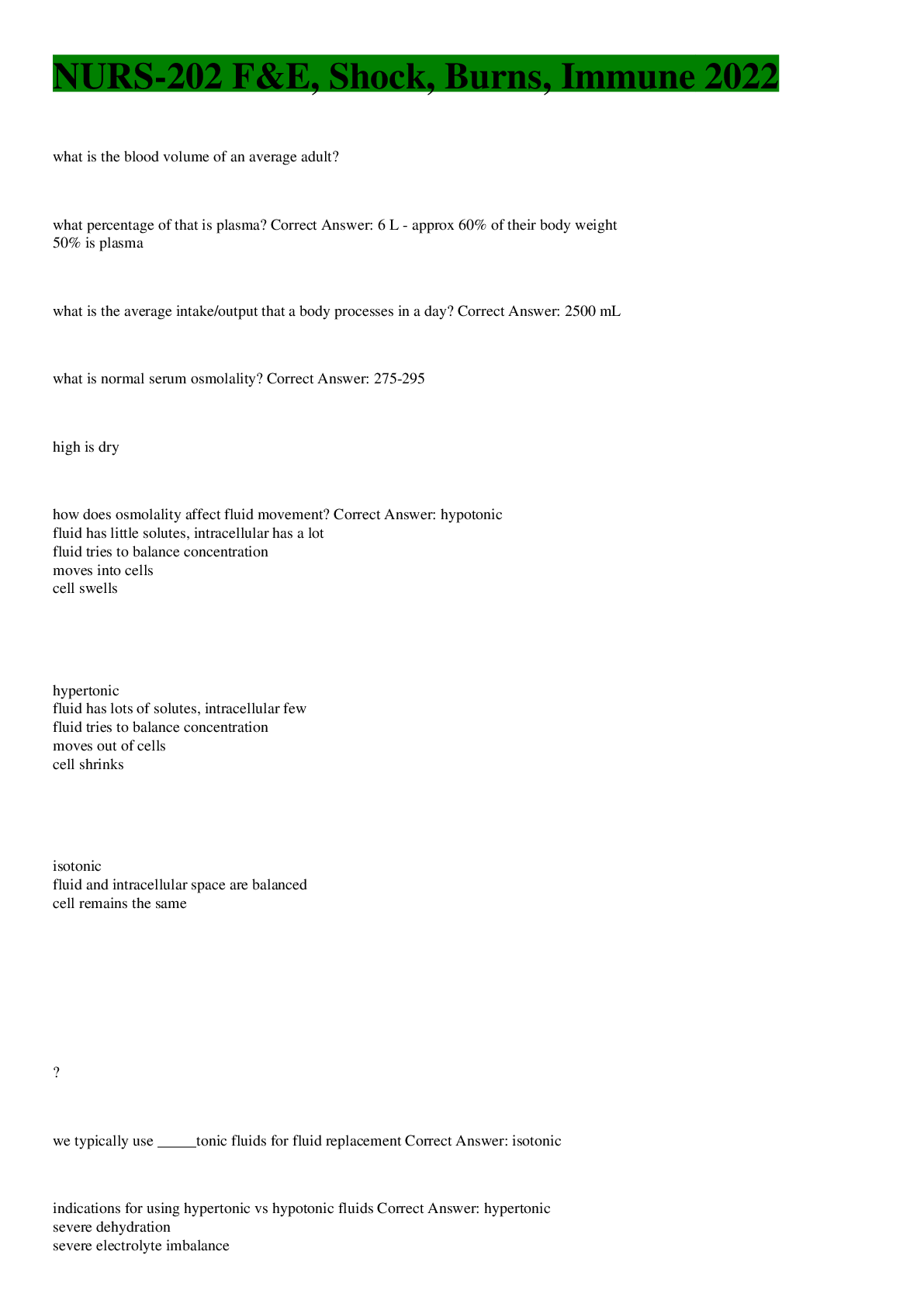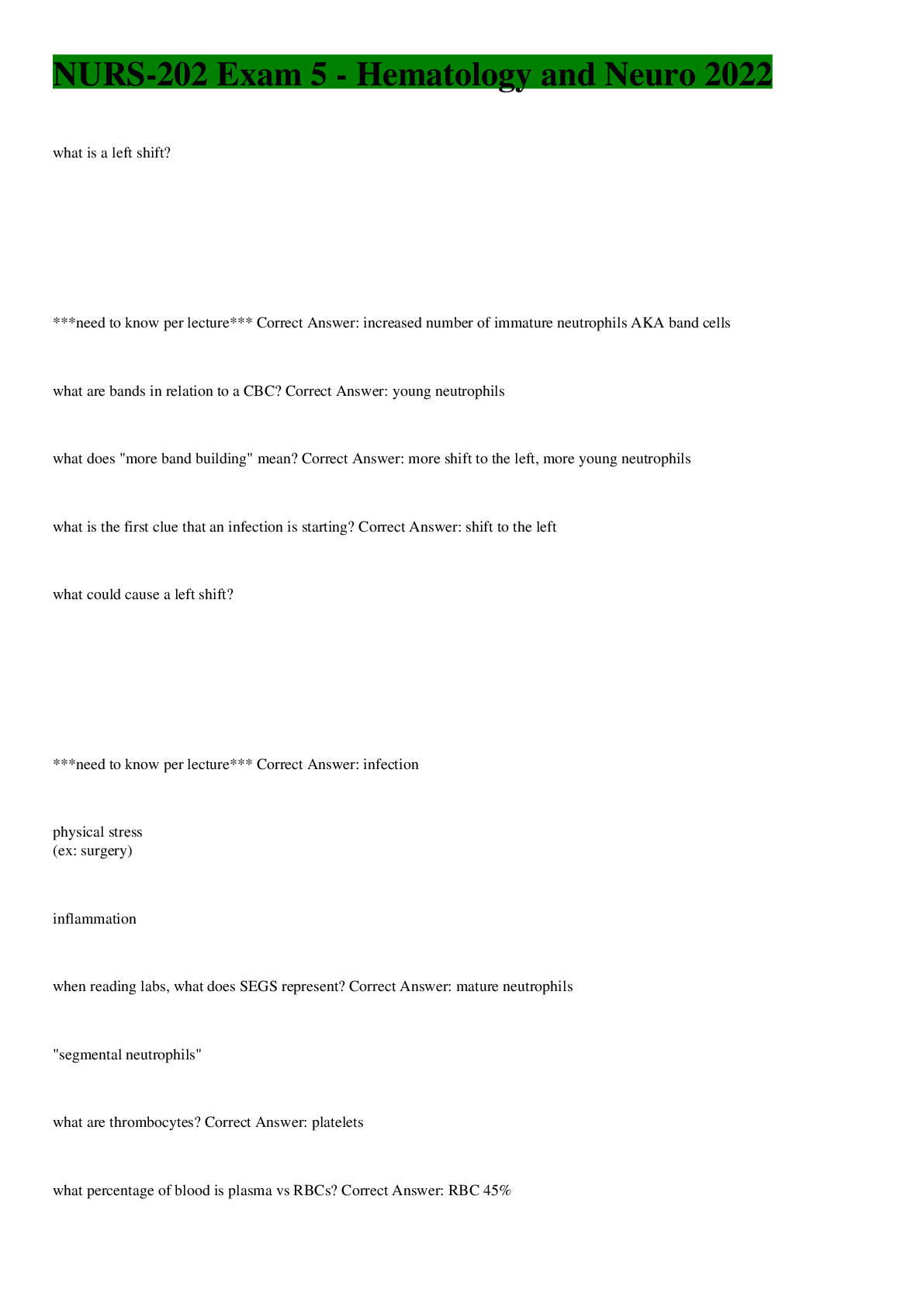Pharmacology Study Guide - Part 2 exam questions and answers
Document Content and Description Below
1. A nurse is caring for a patient who is experiencing B nausea and vomiting from chemotherapy. Which of the following would be an appropriate nursing diag- nosis for this patient? A) Infection, R... isk for related to drug-induced bone marrow suppression B) Nutrition, Imbalanced: Less Than Body Require- ment related to adverse effects of drug C) Poisoning, Risk for related to use of a drug with a narrow therapeutic index D) Nutrition, Imbalanced: More Than Body Require- ment related to adverse effects of drug 2. A nurse has administered a medication to a patient C with hypertension. The prescribed drug is supposed to decrease cardiac output. A decrease in cardiac output would most likely A) increase the serum creatinine level. B) decrease drug absorption in the blood. C) decrease the amount of circulating blood sent through the kidneys. D) increase the synergistic effect of the drug. 3. A home health nurse notes that there have been B changes to a patient's oral drug regimen. The nurse will closely monitor the new drug regimen to A) track the exact route of metabolism as a research project. B) identify any changes in drug absorption that would change the drug effect. C) monitor only for the adverse effect of immunotoxi- city. D) determine the speed of chelation. 4. Which of the following affects drug distribution C throughout the body? A) Presence of food in the gastrointestinal tract B) Increase in hepatic enzymes C) Protein binding D) High blood levels 5. A patient is being seen in the emergency department D for a sprained ankle and is given a drug to relieve pain. When a second dose of the pain medication is given, the patient develops redness of the skin, itching, and swelling at the site of injection of the drug. The most likely cause of this response is A) a hepatotoxic response. B) an idiosyncratic response. C) a paradoxical response. D) an allergic response. 6. A 70-year-old man who enjoys good health began D taking low-dose aspirin several months ago based on recommendations that he read in a magazine ar- ticle. During the man's most recent visit to his care provider, routine blood work was ordered and the re- sults indicated an unprecedented rise in the man's serum creatinine and blood urea nitrogen (BUN) lev- els. How should a nurse best interpret these findings? A) The man may be experiencing a paradoxical effect of aspirin B) The man may be allergic to aspirin C) The man may be experiencing liver toxicity from the aspirin D) The man may be experiencing nephrotoxic effects of aspirin 7. A nurse who provides care for older adults is aware of B the high incidence of drug interactions in this popu- lation. When educating a group of seniors about the prevention of drug interactions, the nurse should en- courage them to A) take their medications with food unless otherwise instructed. B) consult their care provider before taking new over-the-counter medications. C) maintain a healthy, high-fluid diet, and high levels of physical activity. D) ensure that there is at least 90 minutes between doses of different drugs. 8. A patient with a variety of chronic health problems is A being seen by her nurse practitioner, who is currently reviewing the patient's medication regimen. Which of the patient's medications should prompt the nurse to teach her to avoid drinking grapefruit juice? A) Atorvastatin (Lipitor) B) Rabeprazole (Aciphex) C) Vitamin D D) Citalopram (Celexa) 9. In light of her recent high blood pressure readings, D a patient has been started on a thiazide diuretic and metoprolol (Lopressor), which is a beta-adrenergic blocker. What is the most likely rationale for using two medications to address the patient's hypertension? A) The adverse effects of each drug may cancel each other out. B) Using two drugs for a health problem tends to increase patient compliance with the drug regimen. C) Using lower doses of two separate drugs may lessen the risk of adverse reactions. D) Using the two drugs to treat a health problem may create a synergistic effect. 10. A hospital patient has been prescribed an antiemetic C and an antibiotic, both of which are to be administered intra [Show More]
Last updated: 1 year ago
Preview 1 out of 12 pages
Reviews( 0 )
Document information
Connected school, study & course
About the document
Uploaded On
Oct 26, 2022
Number of pages
12
Written in
Additional information
This document has been written for:
Uploaded
Oct 26, 2022
Downloads
0
Views
32


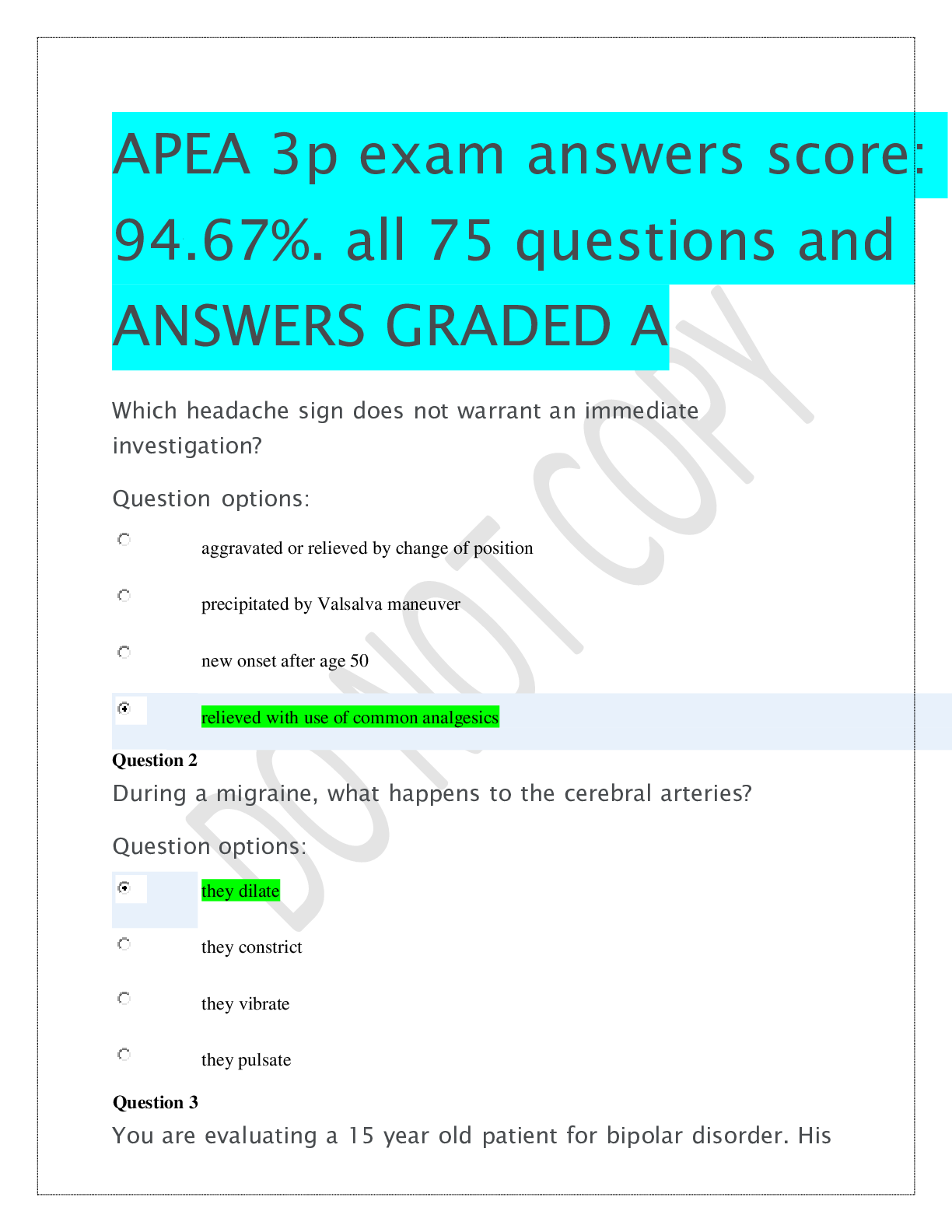


.png)
.png)

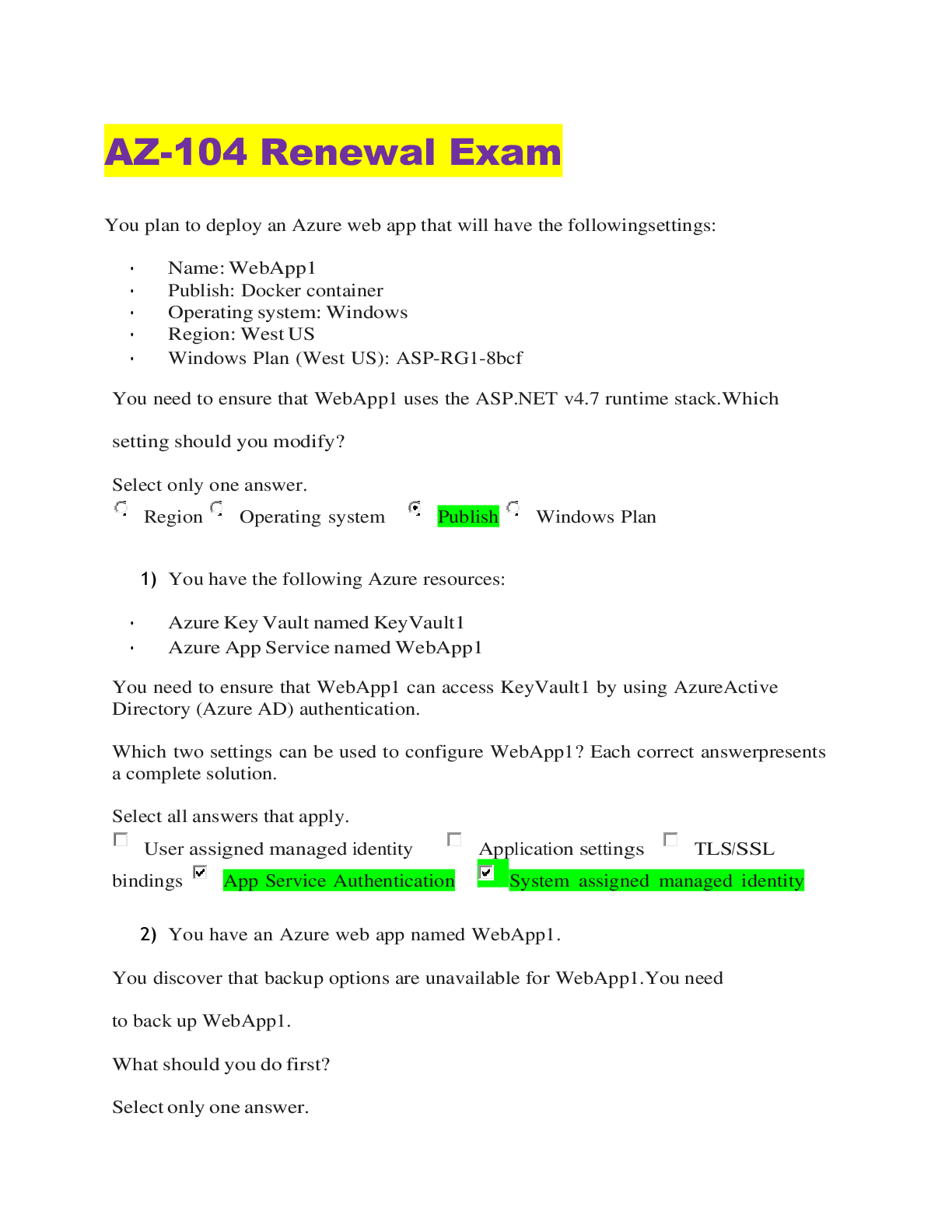


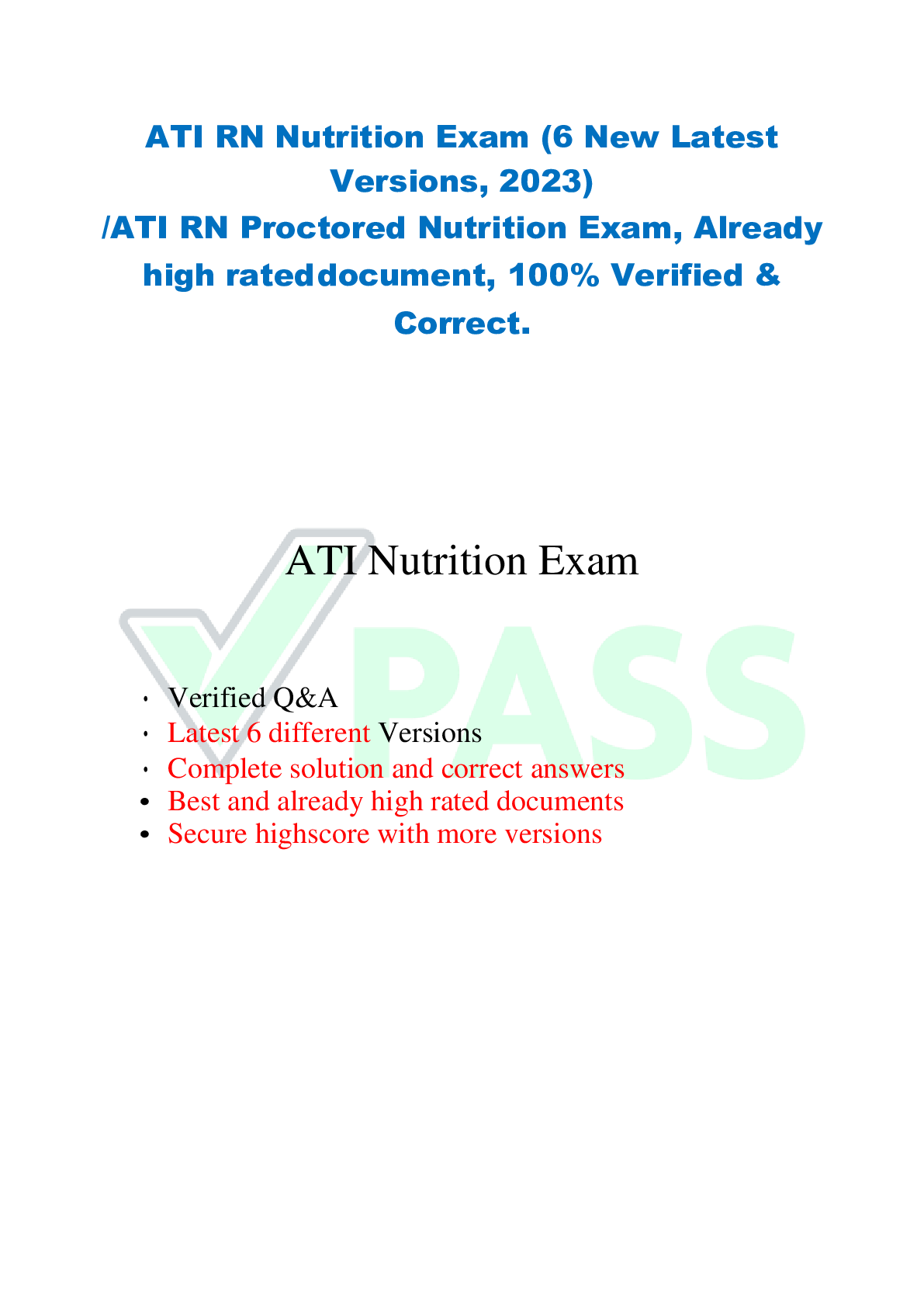

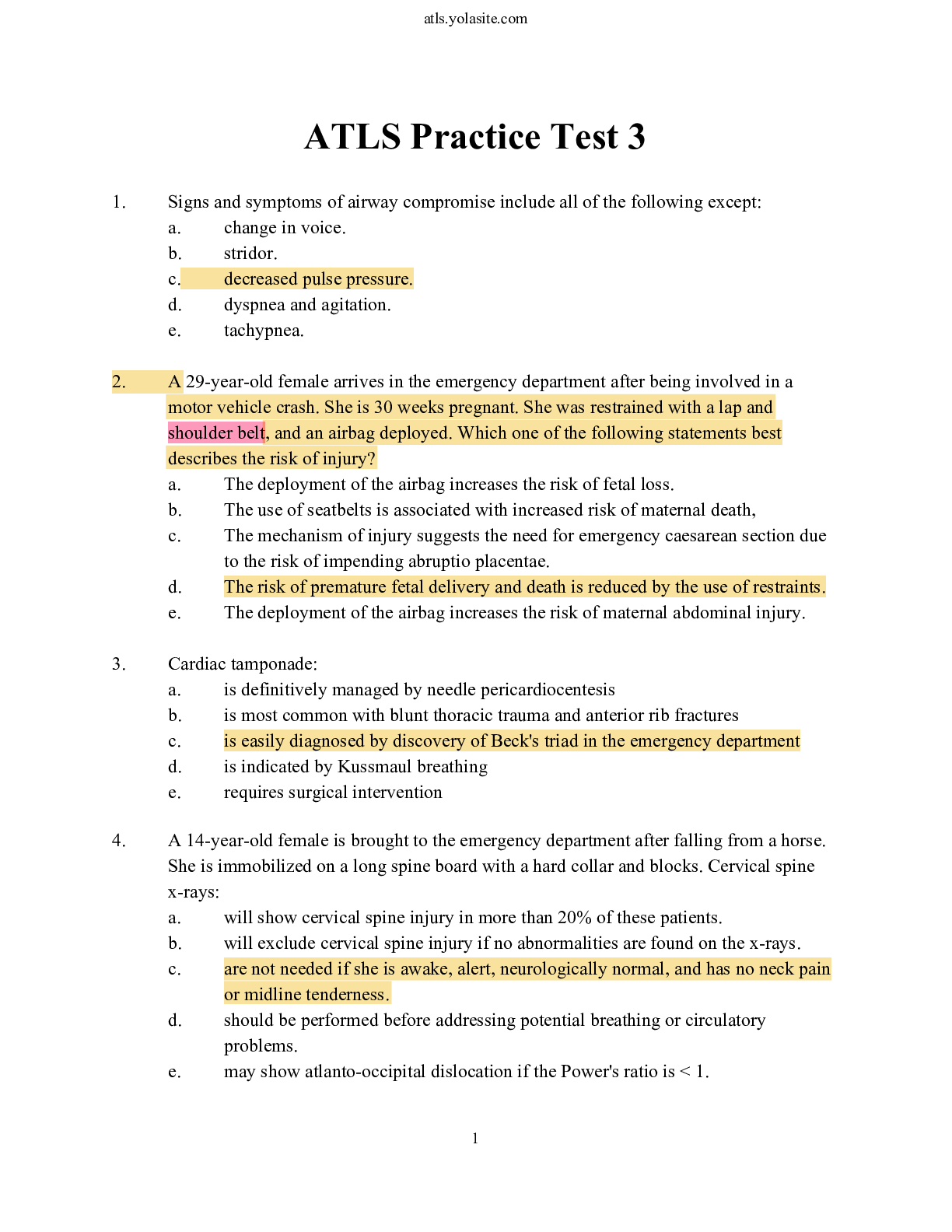



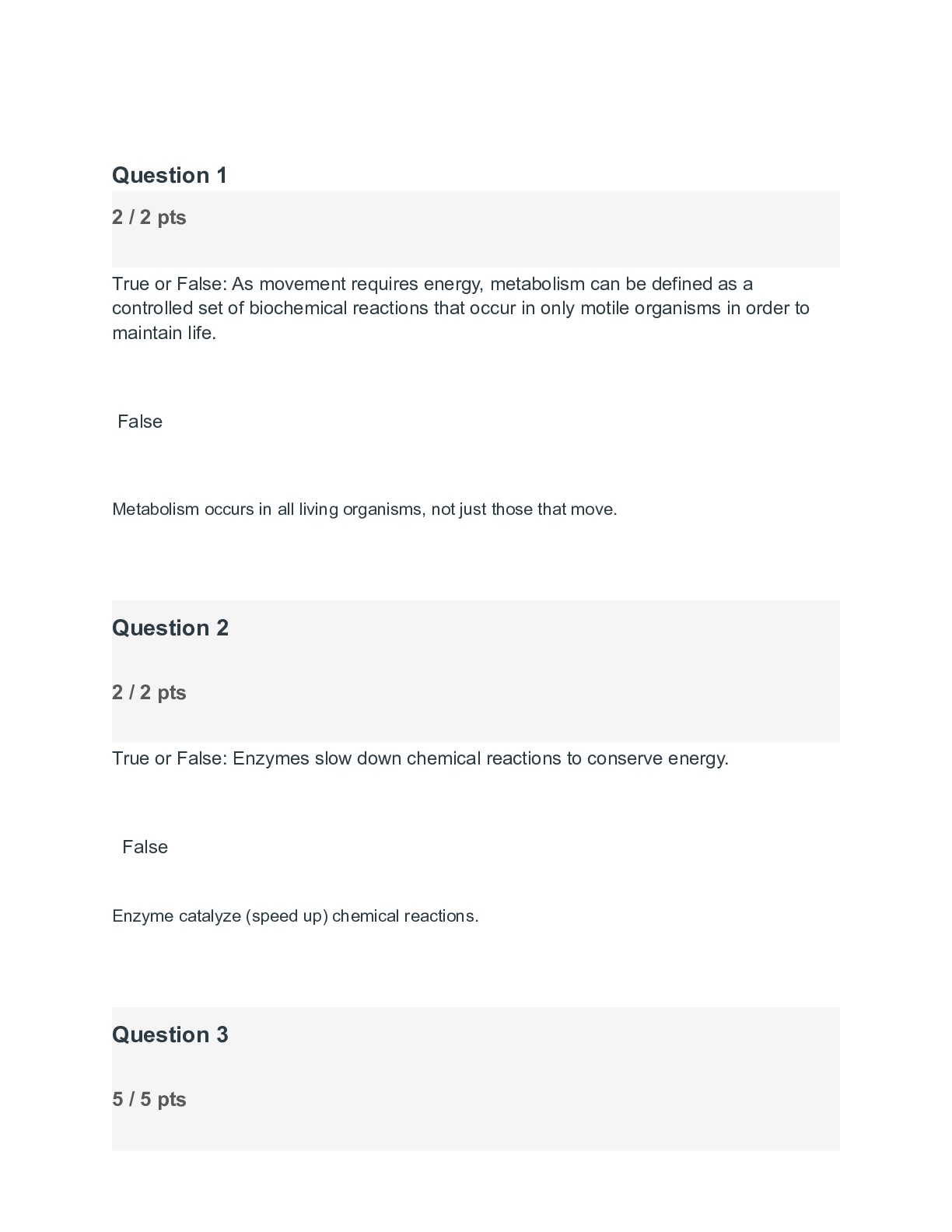
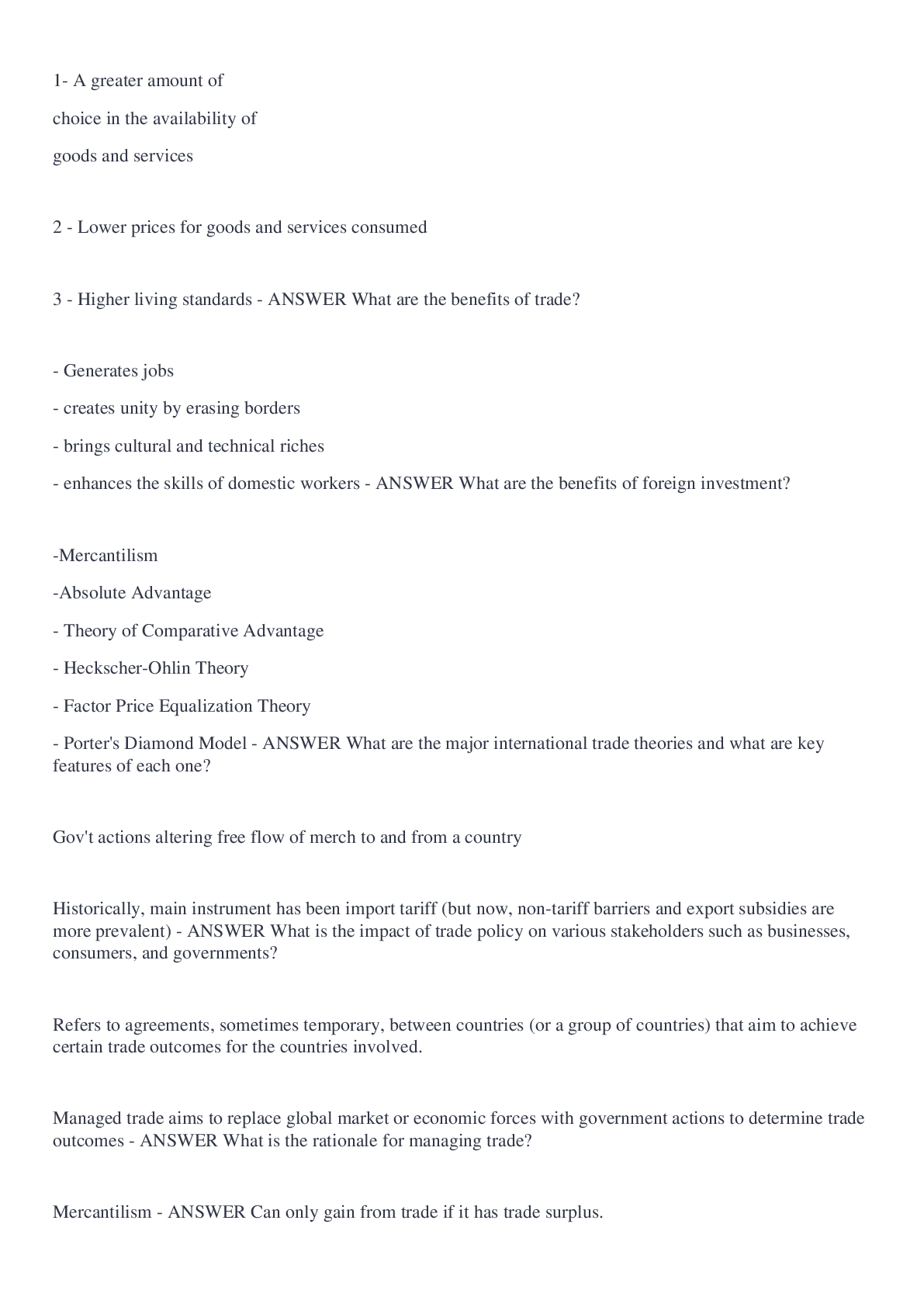

.png)


.png)


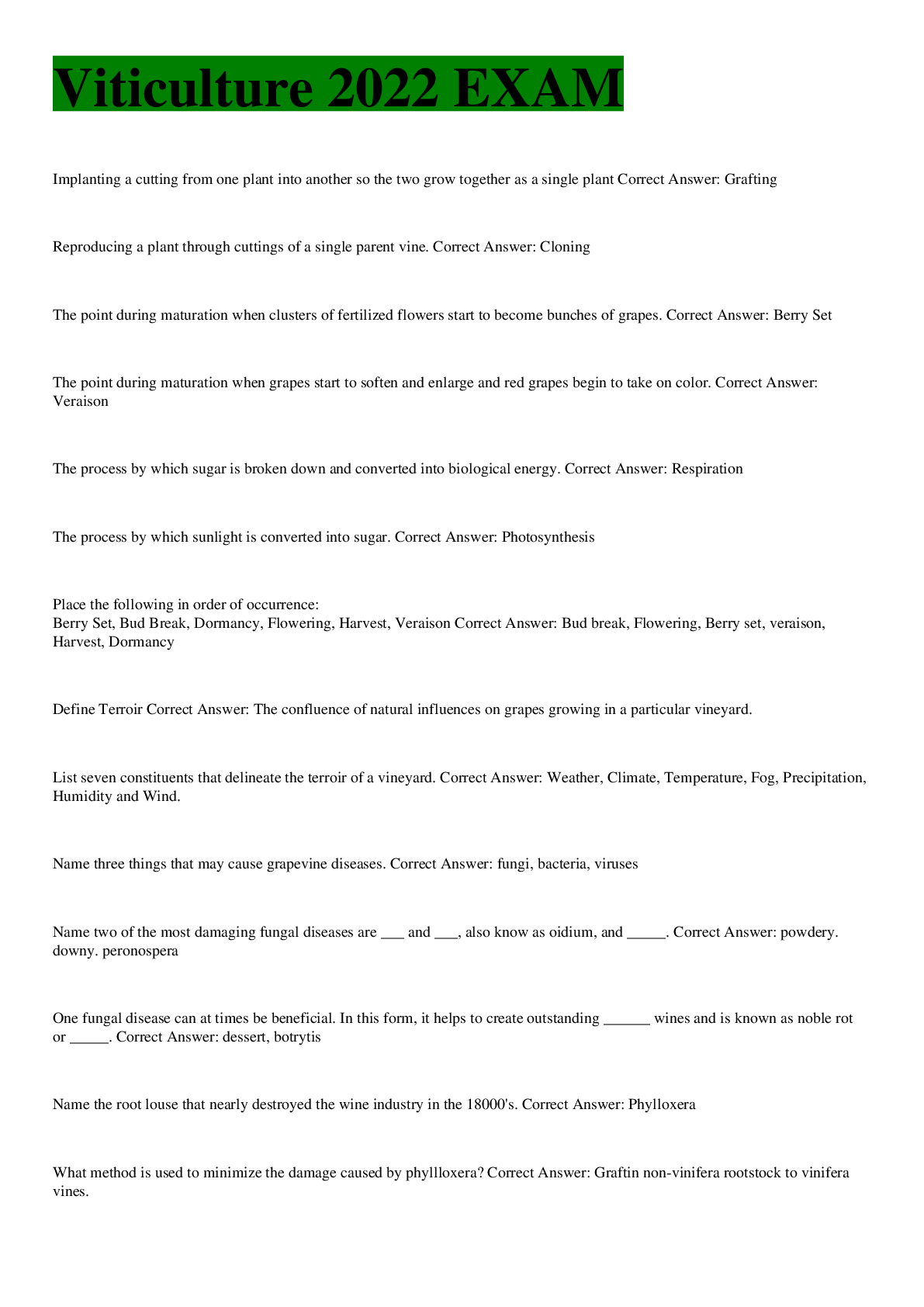


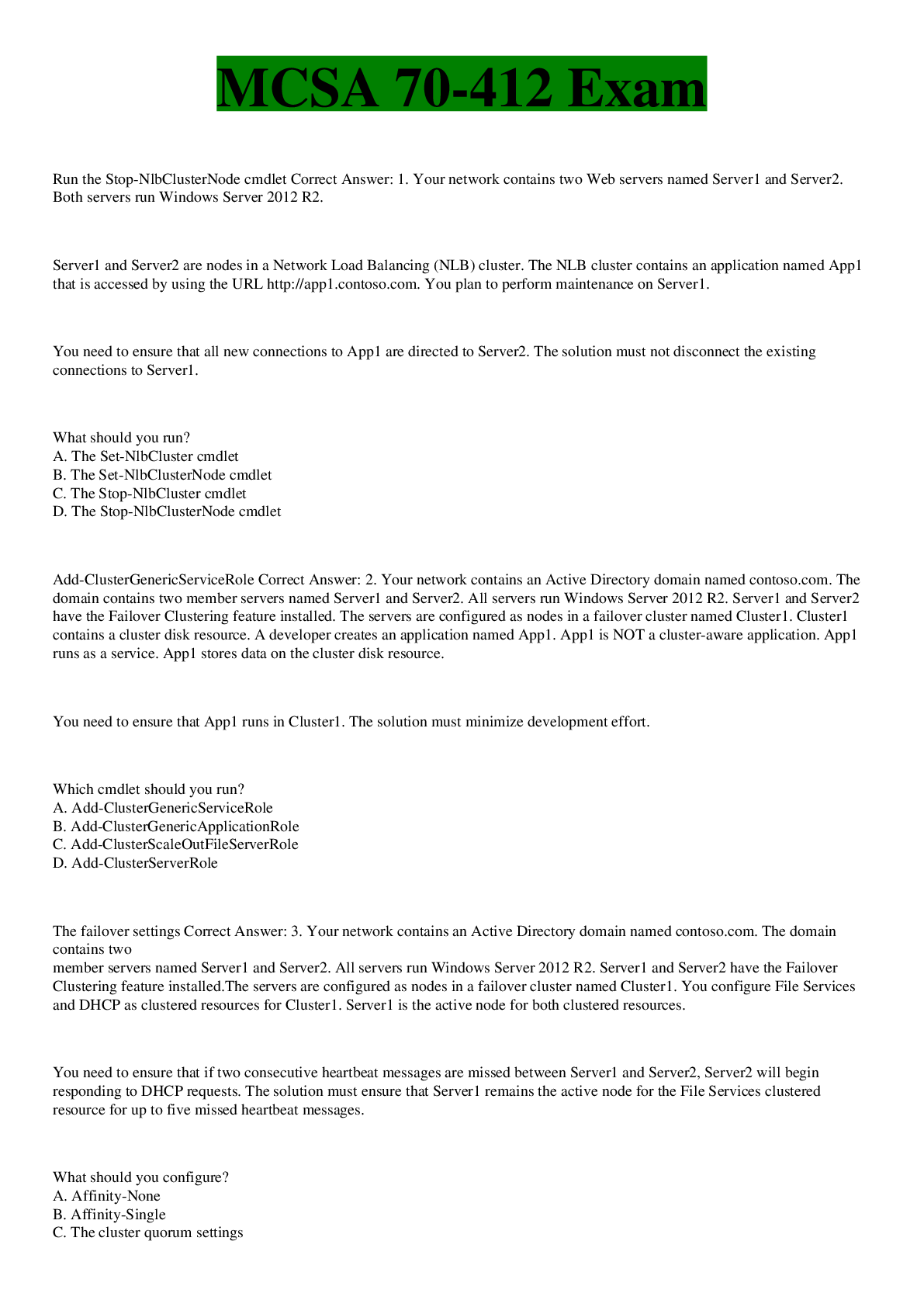
.png)
